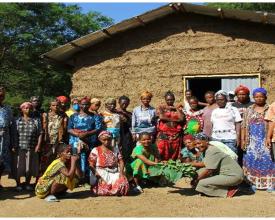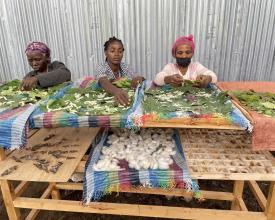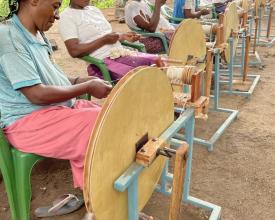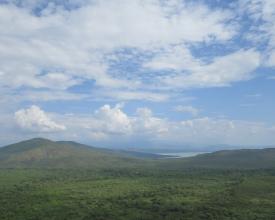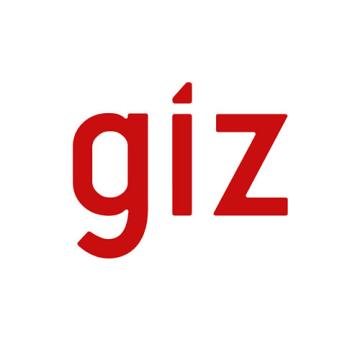
Using Biodiversity to Alleviate Poverty and Ensure Protection of Nech Sar National Park.
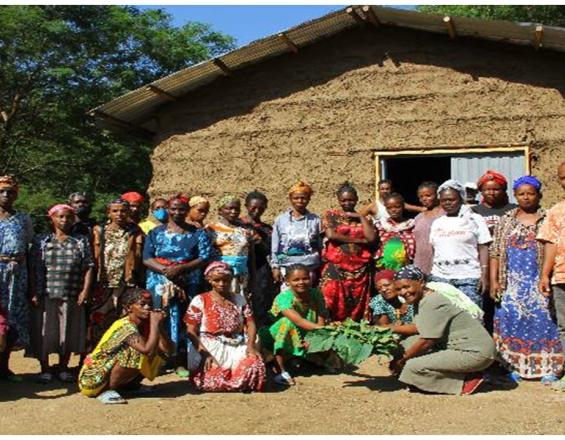
Sericulture is the art of silk production by rearing caterpillars (larvae) and undertaking a post cocoon activity leading to production of silk yarn. The caterpillars, usually the domesticated species of silkworm (Bombyx mori) feeds on mulberry (Morus alba) or castor (Ricinus communis) plants. Hence, the activity also includes cultivation of these plants as a feed, rearing and reeling of the cocoons. We used Sericulture as a solution to provide alternative income generating activity for marginalized women headed households who used to sustain their livelihoods with the sales of firewood extracted from Nech Sar National Park. Their relationship with the national park is harmonized. They serve as ambassadors for conservation advocacy and education.
Context
Challenges addressed
The solution addresses both conservation and livelihood challenges. Protected areas are becoming islands in large swath of degraded landscapes inhabited by poor communities. Communities must encroach the park boundary to illegally extract resources so that they can sustain their families. This leads to conflict with the park law enforcement team as they try to maintain the integrity of the park. Unless both community and park management work in partnership both the poverty and protection of the park will not be sustainably achieved. The beneficiaries are selected women-headed and marginalized urban households who were dependent on resources they extracted illegally from the park.
Location
Process
Summary of the process
Sericulture business circles around the life cycle of a butterfly species. Increasing the awareness of local communities about the conservation value of these species will help make the sericulture business sustainable.
Building Blocks
Creating market linkage wth Berry Sericulture PLC
Berry Sericulture PLC is a veteran sericulture business operator in Ethiopia and particularly around Nech Sar National Park. Berry PLC, provided by GIZ, have been providing eggs, technical support and training to the women headed sericulture operators. Berry also buys the roe and value-added products from the operators.
Enabling factors
Berry PLC is a well-established enterprise, it has all the technical and logistical capacities to backstop and ensure a market for their products. The national park is also fully committed to the partnership with Berry PLC.
Lesson learned
We have learnt a lesson that, if we listen to each other and come together to resolve our common challenges, we will be able to achieve results that have cross-sectoral impoacts. Protected areas management should consider livelihood aspects and local communities could be empowered to play as conservation guardians and ambassadors. Nature based solutions not only alleviate poverty but also reduce the pressure of local communities on to protected areas. Unless both poverty reduction and protection of the park are addressed together both conservation and economic development goals will not be achieved adequately.
Establishing a Butterly Museum as additional income generating source for the women sericulture operators
Sericulture is the art of silk production by rearing caterpillars (larvae) and undertaking a post cocoon activity (e.g. reeling) leading to production of silk yarn. Women headed households who use to earn income from the sales of firewood illegally extracted from Nech Sar National Park are now engaged in production and sales of cocoons and silk yarn. A combination of fishing, beekeeping, agro-forestry, bamboo processing, nursery, and incentive-based woodlot plantation based livelihoods are also being supported. The Park has six endemic butterfly species that have a potential to be used for sericulture business. The Museum, managed by the sericulture operators, could serve as environmental education center and source of income for the operators in the form of visitor fees. They could also sale their products from the sericulture business as well as food and beverages for visitors of the museum. The visitors include domestic and international tourists, school children and conference participants. Arba-Minch is a stay-over destination for tourists travelling to the Konso, Dorze, Nech Sar National Park and Omo-Valley tourist attraction sites in Ethiopia as well as important conference tourism site in Ethiopia. The cost of construction is assumed to come from the award or conservation partners such as GIZ-BFP.
Enabling factors
The park has several butterfly species, some of them are endemic. The park has experts to provide the neccessary technical support.
Lesson learned
Activity not implemented yet.
Impacts
The solution fosters a mutually beneficial relationship between the park and adjacent local communities. The beneficiaries no longer depend on the collection and sales of firewood collected from the national park. The park has allocated them a small plot of land to grow caster plant (Ricinus communis) as feed for the silkworms they are rearing. They act as ambassadors to educate their community on the value of the national park. As well as providing an alternative livelihood to them the solution promotes environmental integrity and functionality. The park staff have also learnt a lesson that park management issues can be addressed through cooperative arrangements and not just through law enforcement interventions.
Beneficiaries
The Park, the 29 sericulture operators, Bere Sericulture Plc and the local administration are the primary beneficiaries of this project. It connects public, community and private actors working together to alleviating poverty and safeguarding the environment.
Sustainable Development Goals
Story
About 140 women headed households were identified in two localities of Arba-Minch town, who are predominantly dependent on income earned by collecting and selling of fuel wood from Nech Sar National Park. We organized twenty-nine of these households to be engaged in Sericulture based alternative income generating activity. The park allocate land for their workspace and plantation of feed plants. The beneficiaries were in vicious circle of poverty. As fire wood collection is a risky, tiresome and time taking illegal business; they were not able to shift to other legal means of income generating activity by themselves. They must cross river banks and remote lake shores; exposing themselves to attacks by wildlife while trying to hide from park rangers doing law enforcement in the park. That frustration has now changed to a harmonious relationship, at least for some of the households. The park cares for their interests and they care for the park. The beneficiaries learnt that, they are in this sericulture business because of the park. The park also considers now livelihood issues as strategic conservation agenda.
